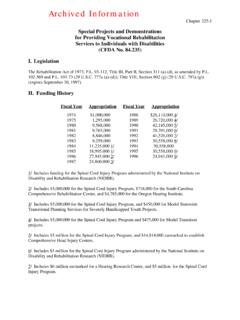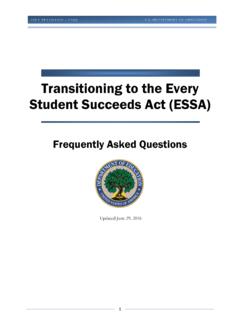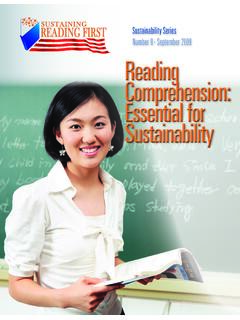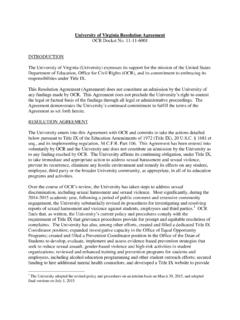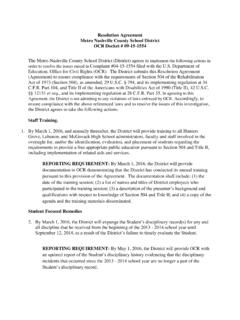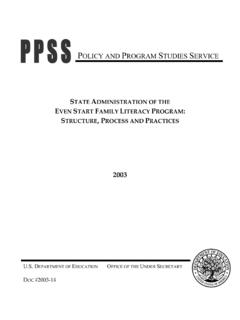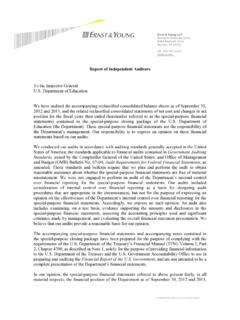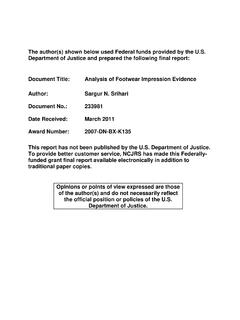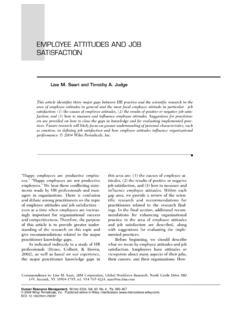Transcription of Six Goals of Educational Equity and School Reform (PDF)
1 Intercultural Development Research Association South Central Collaborative for Equity Six Goals of Educational Equity and School Reform Developed by Bradley Scott, The Equity Ranking Scale 1 Nothing has occurred in that area and no effort exists for responding positively to the question. 2 Nothing has occurred in response to the question, but extensive efforts exist for being able to respond to the question positively. 3 The question can be answered positively and some efforts to uphold and exceed that positive response exist. 4 The question can be answered positively and extensive efforts to uphold and exceed that positive response exist. _____ _____ _____ _____ _____ _____ ___ _____ _____ ___ ___ _____ _____ _____ _____ Six Goals of Educational Equity and School Reform Goals Issue Questions Goal 1: Comparably High Achievement and other Student Outcomes As data on academic achievement and other students outcomes are disaggregated and analyzed, one sees high comparable performance for all identifiable groups of learners, and achievement/performance gaps are virtually non-existent.
2 1. Are there comparably high achievement outcomes for all learners? 2. Are there comparably high social outcomes for all learners, such as responsible citizenship development, cross-cultural competence, conflict resolution and life skills development? 3. Are School promotion and completion rates consistently high for all diverse learners? 4. How are data disaggregated? 5. What is the district using as indicators of success? 6. Are there high literacy, numeracy and technological competence for all diverse learners? 7. Are the assessment measures fair, equitable and appropriate? 8. What is the role of alternative assessment procedures? 9. Are there comparably high rates of participation in college and/or post secondary preparation or is there competent preparation for School -to-work transition for all learners? 10. What is the role of alternative, authentic assessment measures?
3 11. In what ways is the School environment actively and meaningfully engaging and involving parents, guardians and caregivers of all groups of learners supporting their children s success in School ? 12. Are there appropriate monitoring, accountability and follow up measures established to address the achievement gap that exists among diverse learner populations? Intercultural Development Research Association South Central Collaborative for Equity , Revised 2006 Intercultural Development Research Association South Central Collaborative for Equity , Revised 2006 Goals Issue Questions Goal 2: Equitable Access and Inclusion The unobstructed entrance and involvement in, and full participation of learners in excellent community schools, programs, and activities within those schools. 1. Do learners and their families have complete access to relevant information such as student achievement, programplacement and participation in a language or form of communication that is meaningful to them?
4 2. Do the assessment, course selection, and placement processes and appropriate supports exist to include and sustain all learners in quality courses and programs in an equitable manner? 3. Describe than equitable manner in which item two occurs. 4. What are the criteria for a high quality program? 5. How is access ensured for all students? 6. How are you actively recruiting parents? 7. What counseling and advisement strategies and procedures expand options and opportunities equitably for all diverse learners? 8. How do the organizational policies and practices (formal and informal) provide all learners with appropriate access and inclusion? 9. What are the access, availability, quality and use of technology by all learners, instruction in a constructivist wayand in accessing all the supports that the Internet can provide? 11. How are teachers and administrators reflecting high expectations and positive attitudes about their students success?
5 12. How have these measures been institutionalized? 13. In what ways do School -parent-community partnerships exist and foster full access and meaningful engagement for parents and community people in the process of excellent education? 14. In what ways are the assets of School , home, and community, valued and integrated so that all partners become engaged from their positions of strength as equals rather than members in deficit-model School -home interactions? 15. Are there appropriate monitoring, accountability and follow-up measures established to address discrimination that impedes or denies access or full inclusion and success? ____ ____ ____ ____ ____ ____ ____ ____ ____ ____ ____ ____ ____ _____ ____ ____ ____ ____ ____ ____ ____ ____ ____ ____ ____ ____ ____ Goals Issue Questions Goal 3: Equitable Treatment The evidence of patterns of interaction among individuals that is free from threat, humiliation, danger and disregard that also exists within a supportive, quality environment characterized by genuine acceptance, valuing, respect, support, safety and security, so that students, parents, community and staff feel challenged to risk becoming invested in the pursuits of learning and excellence.
6 1. What does the culture of cross-cultural interaction look like in your district? 2. How does your district/campus reflect the four conditions for positive intergroup contact including equal status, knowledge and acquaintanceship, common goal and institutional support? 3. What assessments or surveys have been administered to determine people s attitudes, perceptions, expectations and prejudices about learning and performance of racially and culturally diverse people? 4. How does the staff create, implement and monitor plans for decreasing isolation, separation and segregation between and among racially and culturally diverse students? 5. What assessments are used to measure the cross-cultural competence of staff, parents and students? 6. Are education for diversity and multicultural education as well as training for justice and equality occurring for and reflective of staff, students and parents?
7 7. Is training provided for staff, students and parents in the elimination of personal and institutional (formal and informal) prejudice, discrimination of racism, sexism and classism? 8. What are the organizational policies, systems, procedures, and practices to address racism, sexism and classism? 9. Is training and professional development being provided in areas such as conflict resolution, interpersonal and cross-cultural competence and communication? 10. How does the staff have the knowledge and expertise to apply its understanding of the four conditions across all diverse student populations? 11. Are there appropriate monitoring, accountability, and follow up measures established to address discrimination that impedes or denies equal treatment? _____ _____ _____ _____ _____ _____ _____ _____ _____ _____ _____ Intercultural Development Research Association South Central Collaborative for Equity , Revised 2006 Intercultural Development Research Association South Central Collaborative for Equity , Revised 2006 Goals Issue Questions Goal 3: Equitable Treatment continued 12.
8 What is the evidence that the system has institutionalized practices of inclusion and integration? 13. How does staff work to create, implement, and monitor learning environments to ensure that they are racially and culturally inclusion and free of racial and gender bias and hostility? 14. How is monitoring for diversity in curriculum development integrated into the teacher evaluation processes? 15. Do the interactions of all individuals including administrators certified and non-certified staff, students and parents reflect valuing and respect for the language, cultural and class differences of others? 16. What is the evidence of equitable support, treatment, assistance, and guidance given to students and parents? 17 Are there comparably low disciplinary referrals, absenteeism rates, suspensions and expulsions for all learners? 18. Are there violence-free, safe, supportive learning environments for all learners?
9 19. What constitutes meaningful engagement in the teaching/learning process that is culturally, linguistically and cognitively appropriate for all learners? _____ _____ _____ _____ _____ _____ _____ _____ Goals Issue Questions Goal 4: Equitable Opportunity to Learn The creation of challenging learning opportunities such that every child, regardless of characteristics and Educational needs, is given the requisite pedagogical, social, emotional and psychological and materials supports to achieve the high academic standards of excellence that are established. 1. How is every learner presented with a high quality and challenging curriculum that is race, gender and class bias-free as well as the appropriate form of instruction and support to make that curriculum comprehensible? 2. How do the instructional methods and materials support all students opportunity to learn and to achieve to high standards?
10 3. How do the instructional methods and materials vary to respond to the learning characteristics of all learners? 4. What practices are used to identify and counteract inappropriate practices and placement such as tracking and ability grouping, inappropriate assessment and placement decisions and inadequate guidance and counseling? 5. What staff development, staffing, and organizational structure resources are in place to ensure an equitable opportunity to learn? 6. What instructional strategies and research-based practices are appropriately employed to expand or create opportunities to learn for all students? 7. How are students home languages valued, acknowledged and integrated into instruction? 8. How do you ensure that every learner has access to comprehensible instruction? 9. How is technology used to enhance opportunities for all students to learn in a manner that is equitable, challenging and high quality?

